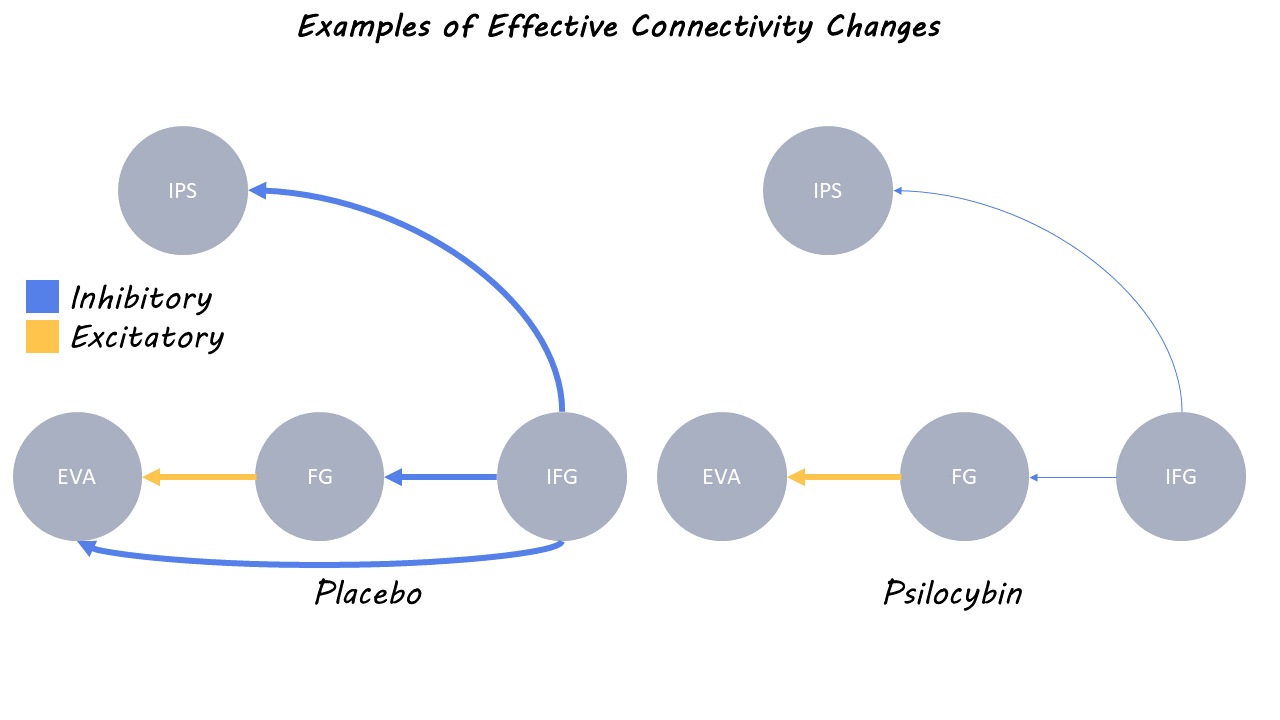How Psychedelics Alter Visual Perception
Post by Annie Phan
The takeaway
Psychedelics, such as psilocybin, can alter visual perception, even when the eyes are closed. This phenomenon can be explained by inhibiting connectivity and reducing sensitivity in regions related to vision, leading to disruptions in visual connectivity and the serotonergic system.
What's the science?
Psychedelics allow researchers to study visual alterations, similar to hallucinations that occur in clinical disorders like schizophrenia. Previous preclinical research has shown the relevance of the serotonergic system in changing synapses under psychedelics. This week in Molecular Psychiatry, Stoliker and colleagues used functional MRI to investigate how psilocybin, a psychedelic drug, produces changes in the connectivity of the human visual system, leading to hallucinations.
How did they do it?
On 2 different occasions at least 2 weeks apart, participants were scanned with an MRI machine to acquire brain activity 20, 40, and 70 minutes after receiving psilocybin or placebo. During the scan, participants had their eyes closed while resting. Immediately after the scan, participants answered a questionnaire about their state of consciousness. The brain regions (Early visual area, Fusiform gyrus, Intraparietal sulcus, and Inferior frontal gyrus) that the authors studied were based on previous research findings. To study the circuits, the authors used Dynamic Causal Modelling to measure the inhibition or excitation of connections as described by effective connectivity (EC) and self-connectivity, allowing inferences of synaptic activity.
What did they find?
The authors modeled the mean EC after administration of the placebo, the change in EC from placebo to psilocybin, and the mean EC after administration of psilocybin. They found a general trend of effective connectivity under psilocybin between the regions of interest showing reduced inhibition. These results further explain previous studies suggesting reduced reception of sensory signals. Under psilocybin, the effective connectivity of the human visual system reflects decreased sensitivity of the brain regions to sensory inputs. Therefore, psilocybin-induced visual alterations involve inhibition of the inputs from brain regions in the visual system and reduction of connectivity between those regions.
What's the impact?
These findings further explain previous preclinical research on the serotonergic system and the inhibition of visual regions during clinical hallucinations and visual imagery. Overall, these findings contribute to a better understanding of visual imagery without external sensory input, which can be applicable in the context of psychiatric disorders, brain injury, sleep, and dreams.

